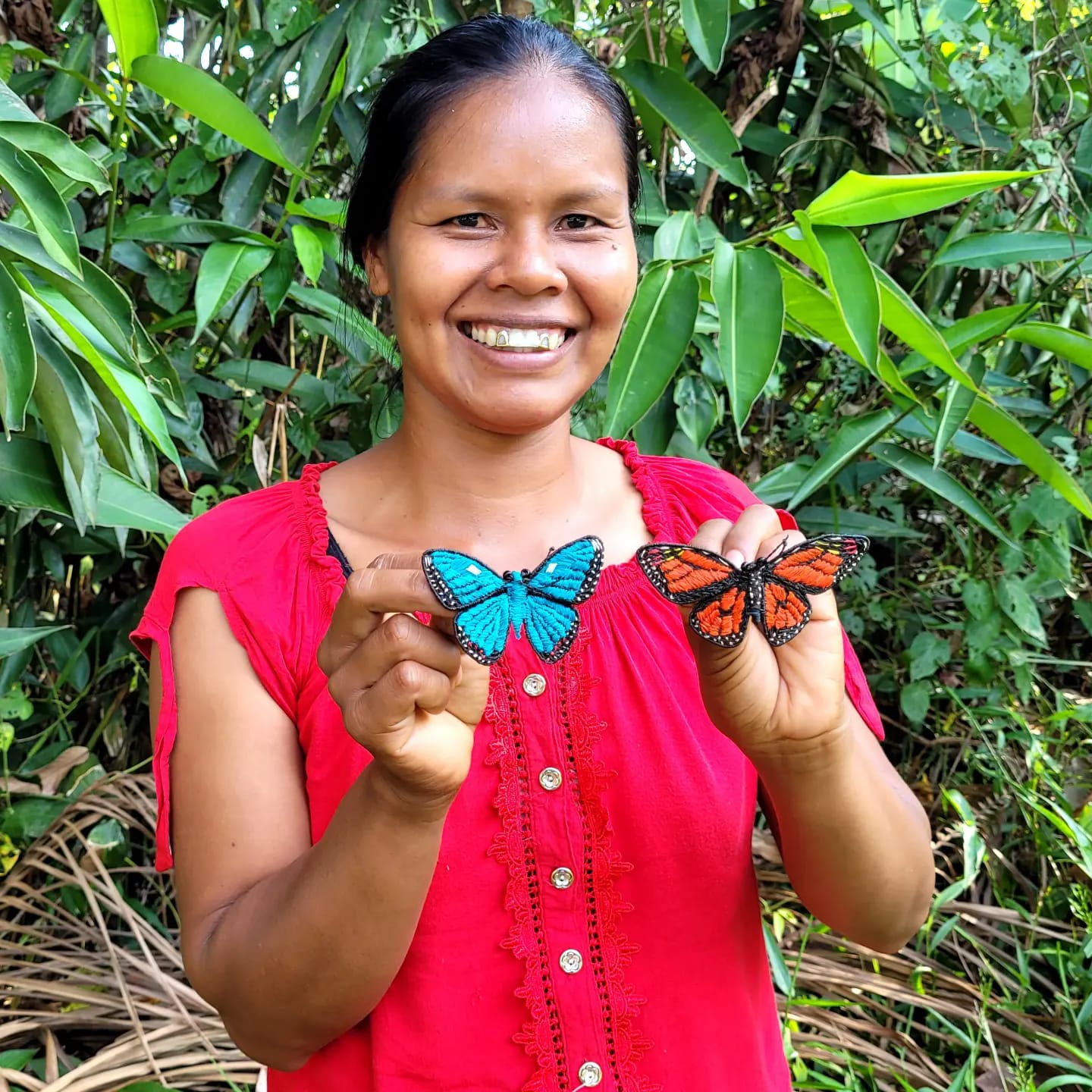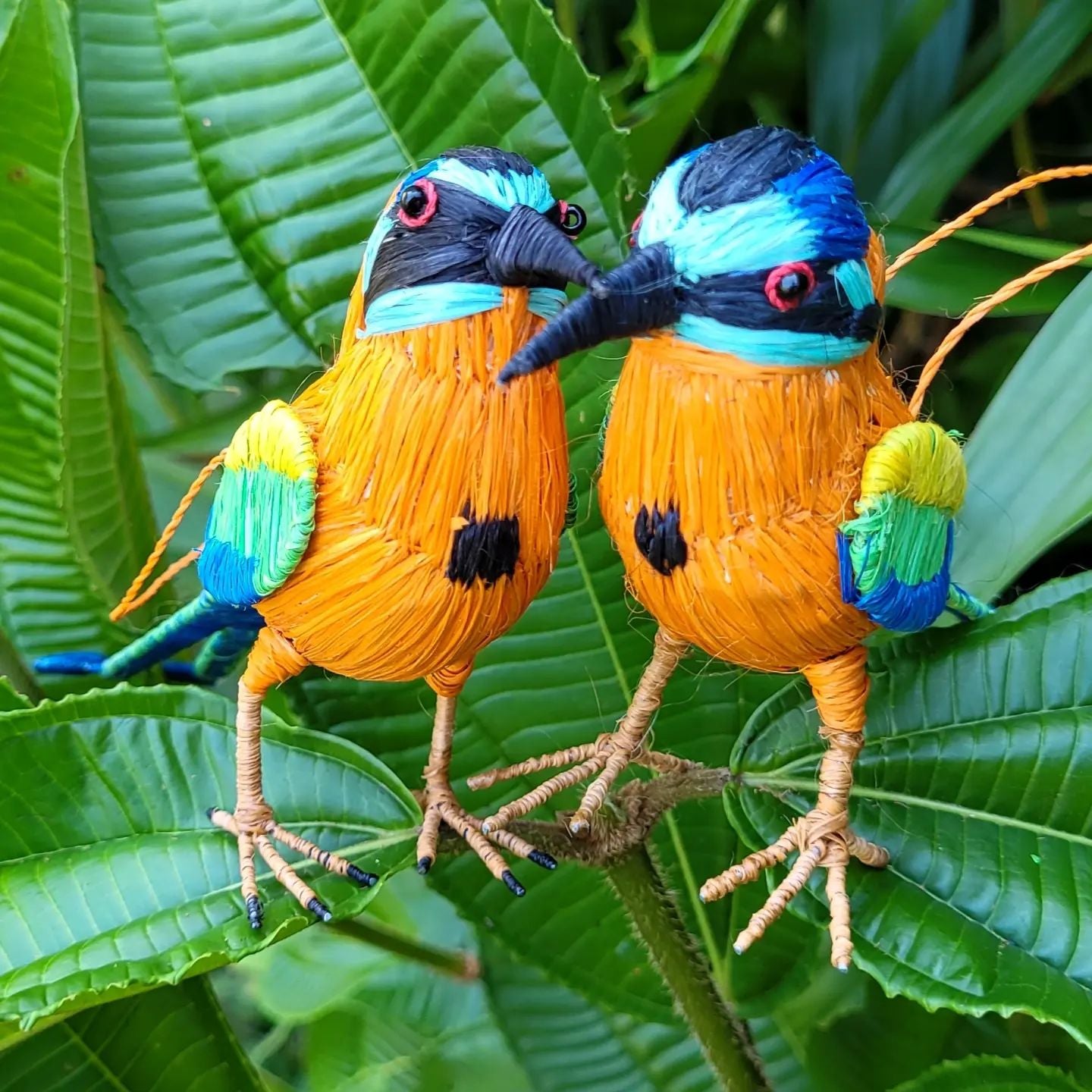by Campbell Plowden
October 2, 2022
The teenage daughter of Dora Tangoa – our main artisan partner in the town Jenaro Herrera made our first woven butterflies in 2007. These simple generic butterflies were about an inch and a half long. We couldn’t sell the black, yellow and green ones, but the pink, yellow and green ones did OK. Dora’s aunt moved the needle forward making a life-size model of the iconic Amazon blue morpho butterfly.


Dora’s niece Doilith wove a detailed version of the scarlet peacock butterfly. While she had withdrawn from college to help take care of her family, her studies in biology and creative talent led her to start catching a few butterflies and draw outlines of them on paper. She used these as templates to weave her chambira ornaments with consistent size and design.


When Dora’s aunt pulled back from working with us because she didn’t want to change her way of making the morphos, Doilith took over making this model. She carefully studied the photos we gave her and adjusted the shape of the wings, length of the abdomen, and color accents to better make it more like the actual species. She then added the green and black Urania, yellow swallow-tail Papilio and orange Monarch to her repertoire. Our sales jumped up another notch when we adapted the butterflies to go on barrettes and hair clips.
These crafts were gorgeous, but they took a long time to make well. Doilith tried hiring other women from her town to help fill our growing orders, but their spotty work didn’t save her time and cost her money. We appreciate, however, she has been willing to travel to other communities to share her skills.

Five years later, there are now a few other artisans who can make high-quality woven butterflies. We want to scale up production of these crafts, but we are facing a familiar fair-trade dilemma. We want to pay these artisans more for the time it takes to make these crafts, but even conscientious customers have a limit to what they are willing to pay for an ethically-sourced product with a compelling story.

A few weeks ago, our team thought to create a set of rubber stamps with the front and back wings of every butterfly species we make. In one hour, Doilith and Marianela used these and an ink pad to make the outlines for two hundred butterflies on four sheets of paper.

Doilith easily showed her students at the workshop how to use these templates to make the wire perimeter of a wing and then cut it out to guide the embroidery. These pre-stamped templates will save artisans many hours of drawing each new pattern by hand.

Doilith has recently woven a strip of black material which could accommodate twenty or more tightly spaced wings. These will then be embroidered and cut to their exact shape – at first by hand and hopefully later with a machine. These innovations could allow an artisan to make five or six butterflies in one day instead of one or two. This greater productivity will make it an attractive option for artisans and allow them to save for the education of a child instead of just buying a few daily necessities.





